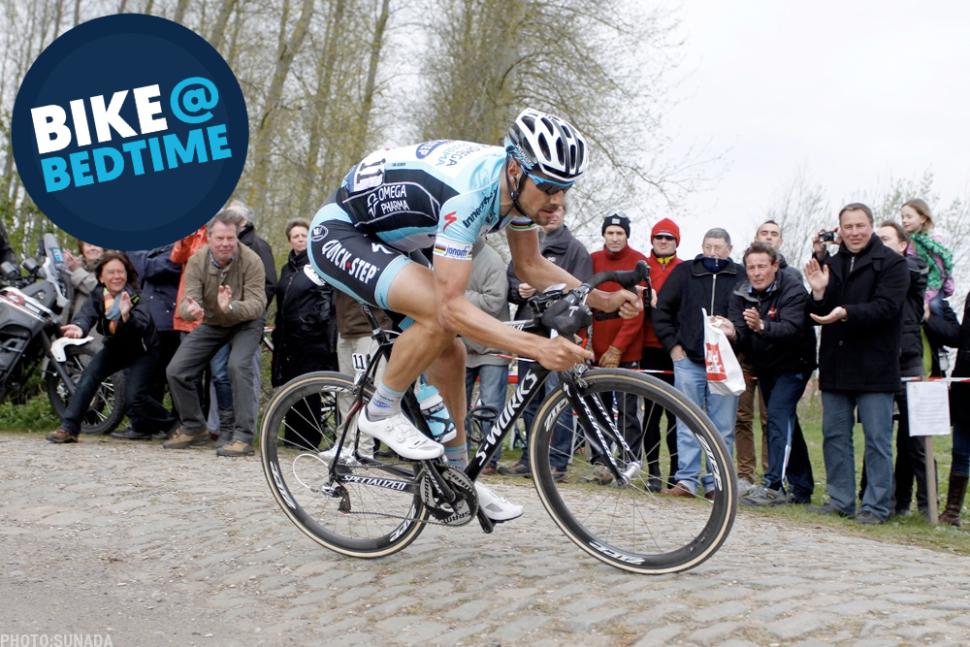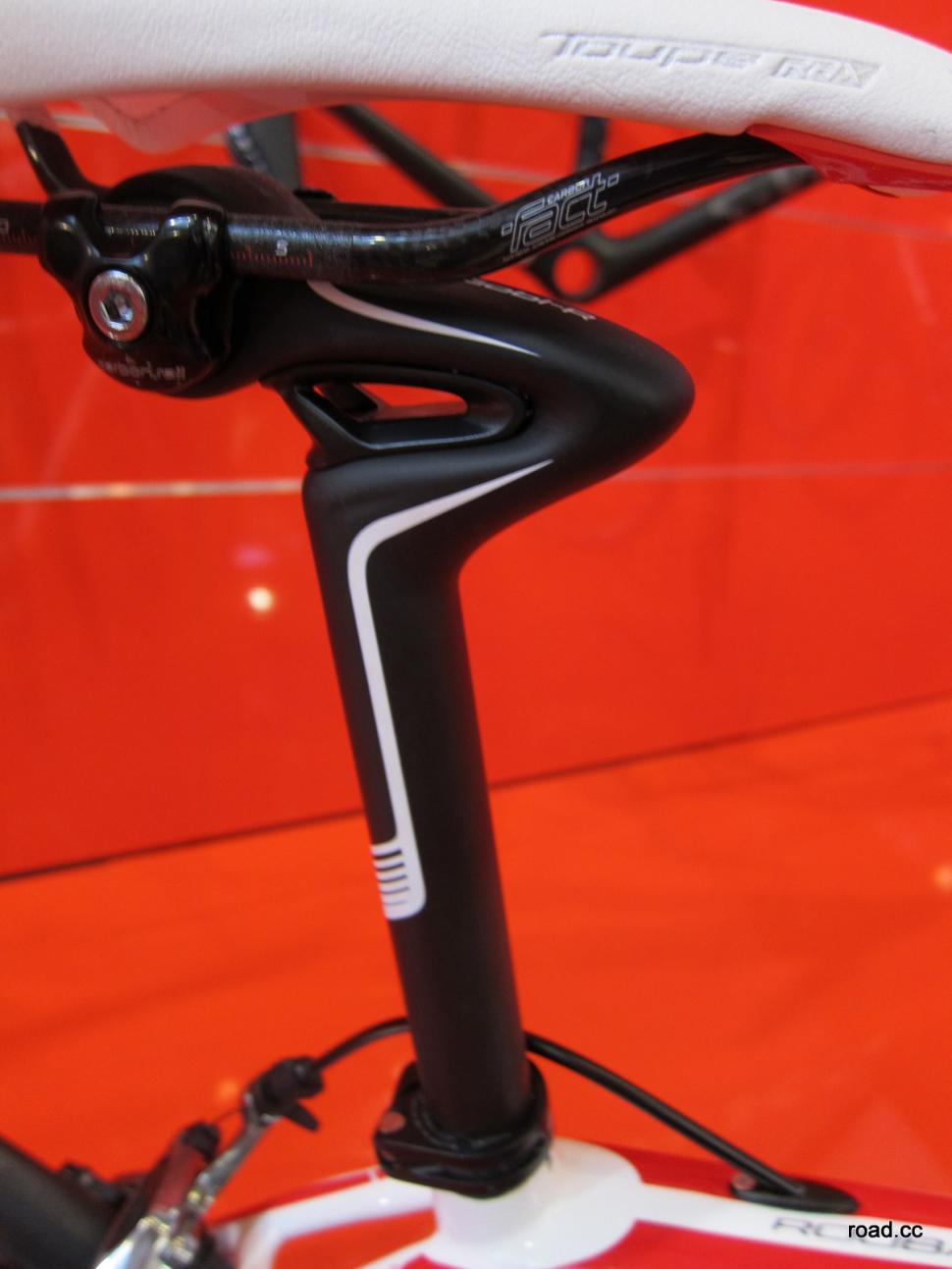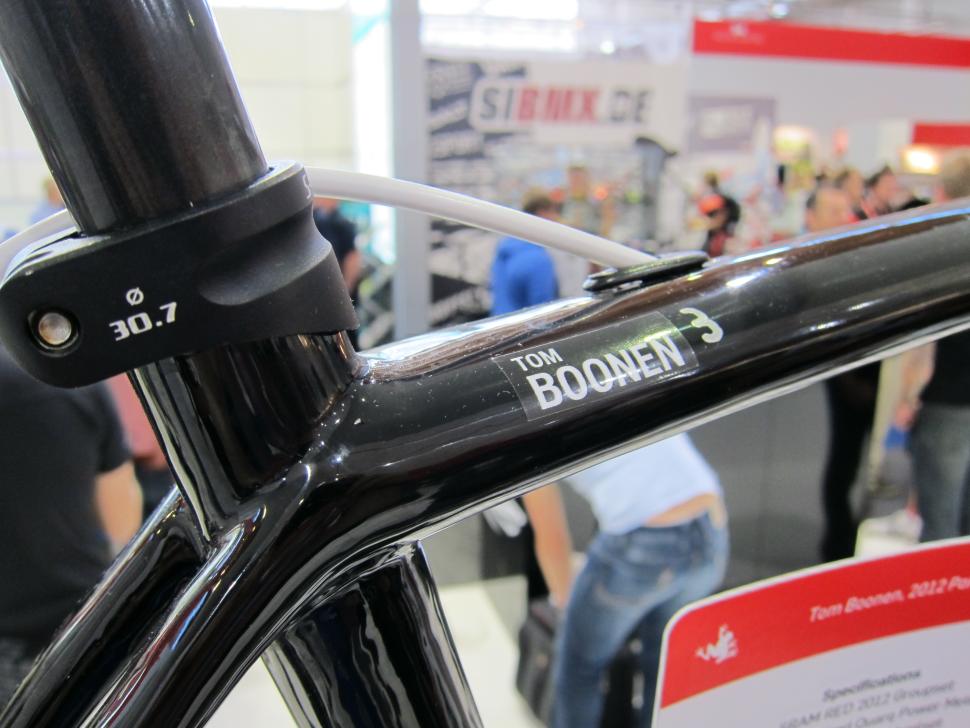- News
- Reviews
- Bikes
- Accessories
- Accessories - misc
- Computer mounts
- Bags
- Bar ends
- Bike bags & cases
- Bottle cages
- Bottles
- Cameras
- Car racks
- Child seats
- Computers
- Glasses
- GPS units
- Helmets
- Lights - front
- Lights - rear
- Lights - sets
- Locks
- Mirrors
- Mudguards
- Racks
- Pumps & CO2 inflators
- Puncture kits
- Reflectives
- Smart watches
- Stands and racks
- Trailers
- Clothing
- Components
- Bar tape & grips
- Bottom brackets
- Brake & gear cables
- Brake & STI levers
- Brake pads & spares
- Brakes
- Cassettes & freewheels
- Chains
- Chainsets & chainrings
- Derailleurs - front
- Derailleurs - rear
- Forks
- Gear levers & shifters
- Groupsets
- Handlebars & extensions
- Headsets
- Hubs
- Inner tubes
- Pedals
- Quick releases & skewers
- Saddles
- Seatposts
- Stems
- Wheels
- Tyres
- Health, fitness and nutrition
- Tools and workshop
- Miscellaneous
- Cross country mountain bikes
- Tubeless valves
- Buyers Guides
- Features
- Forum
- Recommends
- Podcast
feature
 2012 Paris Roubiax Tom Boonen
2012 Paris Roubiax Tom BoonenRemember Zertz? Check out Tom Boonen’s 2012 Specialized S-Works Roubaix SL4
We’re heading all the way back to 2012 for this edition of Bike at Bedtime and the super-interesting Specialized S-Works Roubaix SL4 that Tom Boonen rode to victory in Paris-Roubaix.
Belgium’s Boonen had a stellar season in 2012. As well as his Paris-Roubaix win, he took victory at races including E3 Harelbeke, Gent-Wevelgem, and the Tour of Flanders. The picture above is from Paris-Roubaix with Boonen aboard the yet-to-be-released Specialized S-Works Roubaix SL4 (he won Gent-Wevelgem aboard an S-Works + McLaren Venge and was on an S-Works Tarmac for the Tour of Flanders).
Specialized introduced the Roubaix in 2004 and Boonen rode the second incarnation, the SL2, to back-to-back Paris-Roubaix victories in 2008 and 2009. The SL3 was introduced in 2010, and then we first saw the SL4 model when Boonen rode it in 2012 before its introduction into the 2013 range.
Specialized said that the goal with the Roubaix SL4 was to tune the level of compliance the frame provided with the Zertz located in the fork and in the seatstays.
Zertz? That’s the name that Specialized gave to the viscoelastic inserts it included on the Roubaix at the time, designed to soak up irregularities and smooth the ride, and keep the bike planted on rough roads, rather than skittering and jumping. In truth, the damping was actually down to the shaping and layup of the carbon, and the Zertz just filled the space, but that's not such a good PR story, is it?
For the SL4, Specialized altered the placement of the Zertz. Whereas they were previously positioned in a hole in the middle of the fork leg and seatstay, they were moved to a gap on the edge of each. In other words, rather than being fully contained within the carbon structures, the Zertz were enclosed on only three sides.
Specialized said that it wanted to provide the Roubaix SL4 with a sharper and more focused ride feel than previously, bringing it a little closer to the race-focused Tarmac while still offering the extra comfort that had always been the Roubaix’s key feature.
With that in mind, the Roubaix SL4 borrowed some of the Tarmac’s frame construction features. The bottom bracket and asymmetric chainstays were a one-piece module, for example. The seatstays were wider and straighter than before, making for a stiffer frame, Specialized said, without sacrificing too much of the comfort.
The fork and head tube were tapered, the idea being to balance torsional stiffness with a degree of compliance, while the tubes and layups were independently designed for each frame size. The aim was to get a uniform level of performance across the range. The steerer tubes were size-specific, for example, so Specialized had to design three new forks for the Roubaix.
As well as Zertz inserts in the frame, the Roubaix SL4 came with a new Cobl Gobl-R seatpost, although Boonen didn’t use one for his Paris-Roubaix win. The Cobl Gobl-R (C-GR) used a leaf spring design with a Zertz insert sandwiched in the gap, the idea being to double the amount of compliance on offer. It didn’t flex vertically during normal pedalling, but it did respond to bigger hits.
When we rode a disc-brake version of the Roubaix SL4 at Eurobike in 2013 we said, “The CG-R post is actually more solid than it looks. It doesn’t flex as soon as you sit in the saddle, but you can feel that it’s quite active as you ride along. Specialized reckons it will provide up to 18mm of movement if push comes to shove.”
> First Ride: Specialized S-Works Roubaix SL4 Red Disc
As mentioned, though, Boonen didn't make use of this design, sticking with a more traditional seatpost from Zipp.
Specialized was keen to point out that Boonen had had his position tweaked as a result of the brand’s Body Geometry FIT (Fit Integration Technology) system, working with fit technicians and specialist fitting tools. His handlebar width went from 46cm to 44cm for better aerodynamics, for instance, and he raised his saddle height slightly too.
Boonen’s Omega Pharma-Quick Step team used SRAM's top-end Red groupset, and he rode Zipp 303 wheels.
Of course, Boonen used rim brakes for his 2012 Paris-Roubaix win. Disc brakes weren’t permitted in the pro peloton at the time. Boonen did switch to disc brakes on the road later in his career, but he rode a Specialized Roubaix with rim brakes for his last-ever Tour of Flanders in 2017, by which time the production version was available only with discs. How come? It was simply because of the increased possibility of a puncture over the cobbles, and the faster speed at which a rim brake wheel could be swapped, according to Specialized.
> Pro Bike: Tom Boonen’s Specialized LTD Roubaix - with rim brakes and not discs
The Roubaix has changed hugely since 2012, the latest version coming with Specialized’s Future Shock 3.0 suspension technology and clearance for tyres up to a whopping 40mm wide. Find out all about it here.
Tom Boonen retired from racing in 2017, although he has been involved in many projects in the world of cycling since then, including supporting Classified's Powershift drivetrain.
Mat has been in cycling media since 1996, on titles including BikeRadar, Total Bike, Total Mountain Bike, What Mountain Bike and Mountain Biking UK, and he has been editor of 220 Triathlon and Cycling Plus. Mat has been road.cc technical editor for over a decade, testing bikes, fettling the latest kit, and trying out the most up-to-the-minute clothing. He has won his category in Ironman UK 70.3 and finished on the podium in both marathons he has run. Mat is a Cambridge graduate who did a post-grad in magazine journalism, and he is a winner of the Cycling Media Award for Specialist Online Writer. Now over 50, he's riding road and gravel bikes most days for fun and fitness rather than training for competitions.
Latest Comments
- lonpfrb 1 sec ago
I've heard of the white man's burden, but a Belfry sounds like a mighty endeavour. So many Watts to get that moving. Chapeau!
- lonpfrb 27 min 13 sec ago
If this government were truly interested in change, and joined up government between...
- lonpfrb 50 min 1 sec ago
It's easy to remove the pipe from the fasteners which are C shaped so able to hold but not trap the pipe. Filtering through traffic is then...
- brooksby 57 min 39 sec ago
And you know that because...? I'd read this elsewhere and was surprised to read the story on here - hadn't thought they were "cyclists".
- AidanR 1 hour 8 min ago
85kg weight limit?! I come in well under that, but I'm not sure I'd trust a frame with a limit that low.
- wtjs 1 hour 8 min ago
What was on offer only 2 weeks ago was either 'world' for £20 or tiny areas such as 'Blackpool area' for £5 each or something. You couldn't just...
- Simon E 1 hour 30 min ago
“fastest, lightest, and most durable road tyres yet” Yeah right. "Strong, light, cheap. Pick two."
- David9694 1 hour 54 min ago
Surely a penalty notice will have been delivered by now, which will state where the car is parked?
- Bigtwin 5 hours 38 min ago
A smidge of £8.5K. Seriously. Someone needs to have a strong coffee.




Add new comment
10 comments
A long while ago on a Club ride, being geeks, we swapped rides between the “Mk1” non Zerts Rou, and the enclosed and non-enclosed ones mentioned above, over the same bit of rough road. They didn’t all have the same tyres on to be fair, but no one could tell any difference in the ride at all. Not so the SL8 and the new one with the headstock shock system. Which precipitated spending, unfortunately. But it is a great endurance bike, esp. given the appalling roads these days.
Nice bike - far more suitable for most riders than the Tarmac. I'm guessing even in rim brake form, it can take decent size wheels - 28-30cc.
Nice bike - far more suitable for most riders than the Tarmac
Except, if you actually want to ride it, the inserts won't be available in a few years or even now and they'll crumble to dust at some stage
Looked into that before buying one, as per the article above, the actual inserts are more or less cosmetic, the design of the frame has far more to do with the shock absorbing capacities. You could remove them from the frame and it wouldn't make a substantive difference. If mine ever do need replacing, which would mainly be for cosmetic reasons, I don't think it would be too difficult (for clever mates of mine who know about this sort of thing, not me) to 3-D print a replacement version.
Mine (with rim brakes) very happily takes 28mm Schwalbe Duranos, I think it could probably squeeze in 30mm but with the shock absorption in the seat post and rear triangle I don't really feel any need to go bigger.
I'm actually still running those same calipers (Red 10 speed) on my Sunday best bike - there's a fag paper's clearance on 25mm Corsas 🤨
Is it just the way the image appears, or did Boonen ride a bike 3 sizes smaller than you'd expect? I don't remember watching that much racing back then.
Riding as small a bike as possible for aerodynamics was very fashionable back then, presenting the lowest possible frontal area to the wind. Seems to have fallen out of fashion, I think (willing to stand corrected by those more knowledgeable) it's been accepted that the inefficiency of power transmission that using a frame too small for you entails outweighs the aerodynamic benefit.
I've got very fond memories of the Roubaix SL4, it was my first "proper" bike when getting back into cycling in 2015 (not including 80s BMX, and years later the GT MTB BSO I rode during 2012 and afterwards when the town closed for the Olympics sailing events). I did over 12000km on it before giving it to my brother (still his best bike), including Alpe d'Huez, Stelvio, Portugal N2, and more. The Roubaix Team that replaced it has Future Shock 2.0 and the flexy seatpost and is much more comfortable (and lighter and faster), so that's progress I guess.
Not sure whether Zertz effectiveness was wholly down to carbon lay up as I still have a Zertz equipped bike, the Secteur was the aluminium version of the Roubaix (with the inserts on seatstays and forks) and is still serving as my winter shitter, comfortable and dependable, but heavier than the Roubaix, much easier to work on with external routing though. Often tempted to move it on but difficult to let go of it.
Since last summer I've owned a 2014 Roubaix Dura Ace SL Pro (formerly the property of a double Paralympic gold winner, no less!) and I'll be keeping it for a long time, the most comfortable fast bike I've ever owned. The shock absorption of fork, rear triangle and seatpost are really noticeable and a godsend to a person with arthritis, and it goes like the clappers and handles beautifully. If anyone's looking for a secondhand road bike and wants a bit more comfort without sacrificing speed I'd thoroughly recommend considering a Roubaix, especially as there are some good bargains available, they don't seem to attract quite the same premium as the same vintage Venges and Tarmacs.